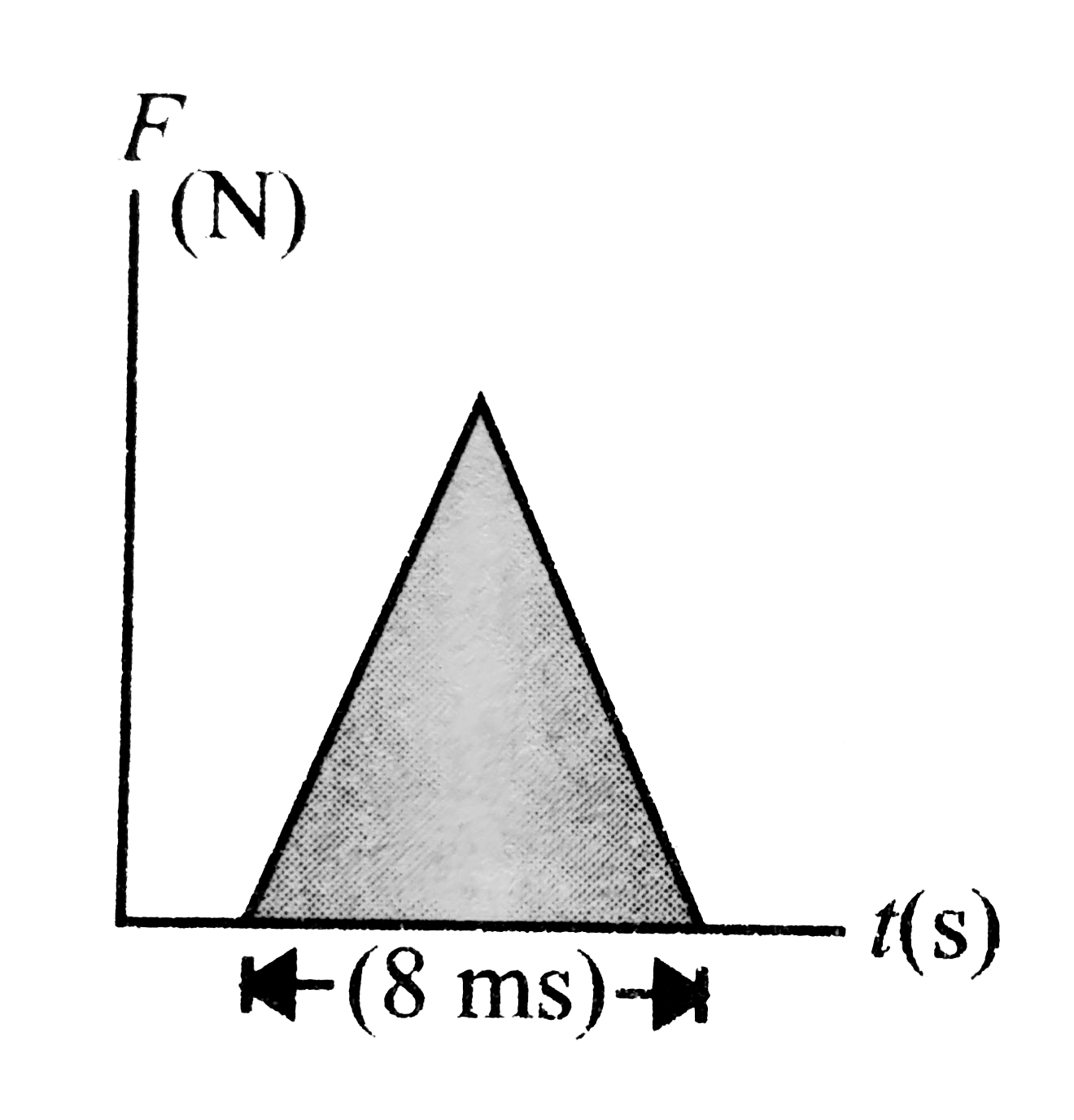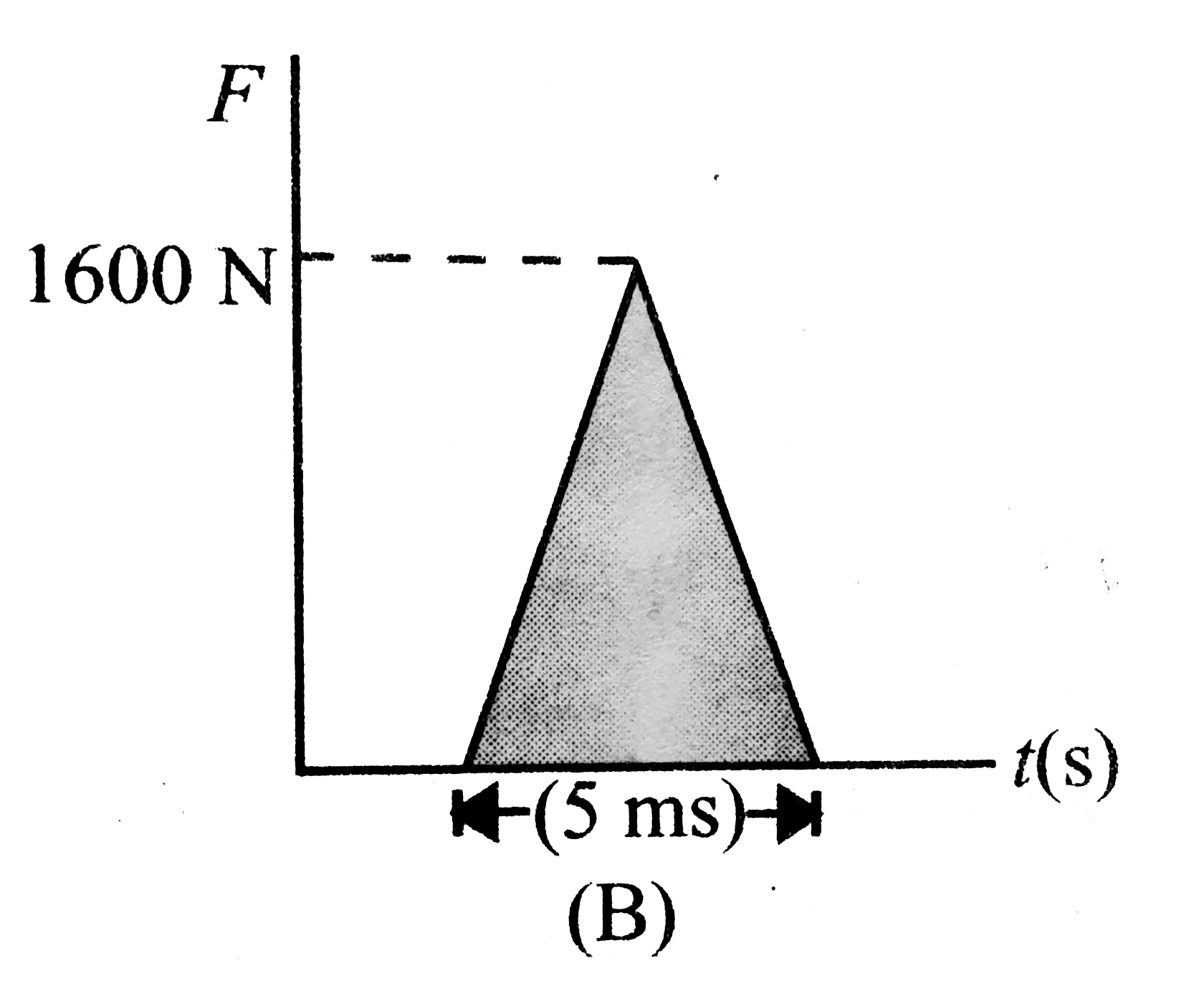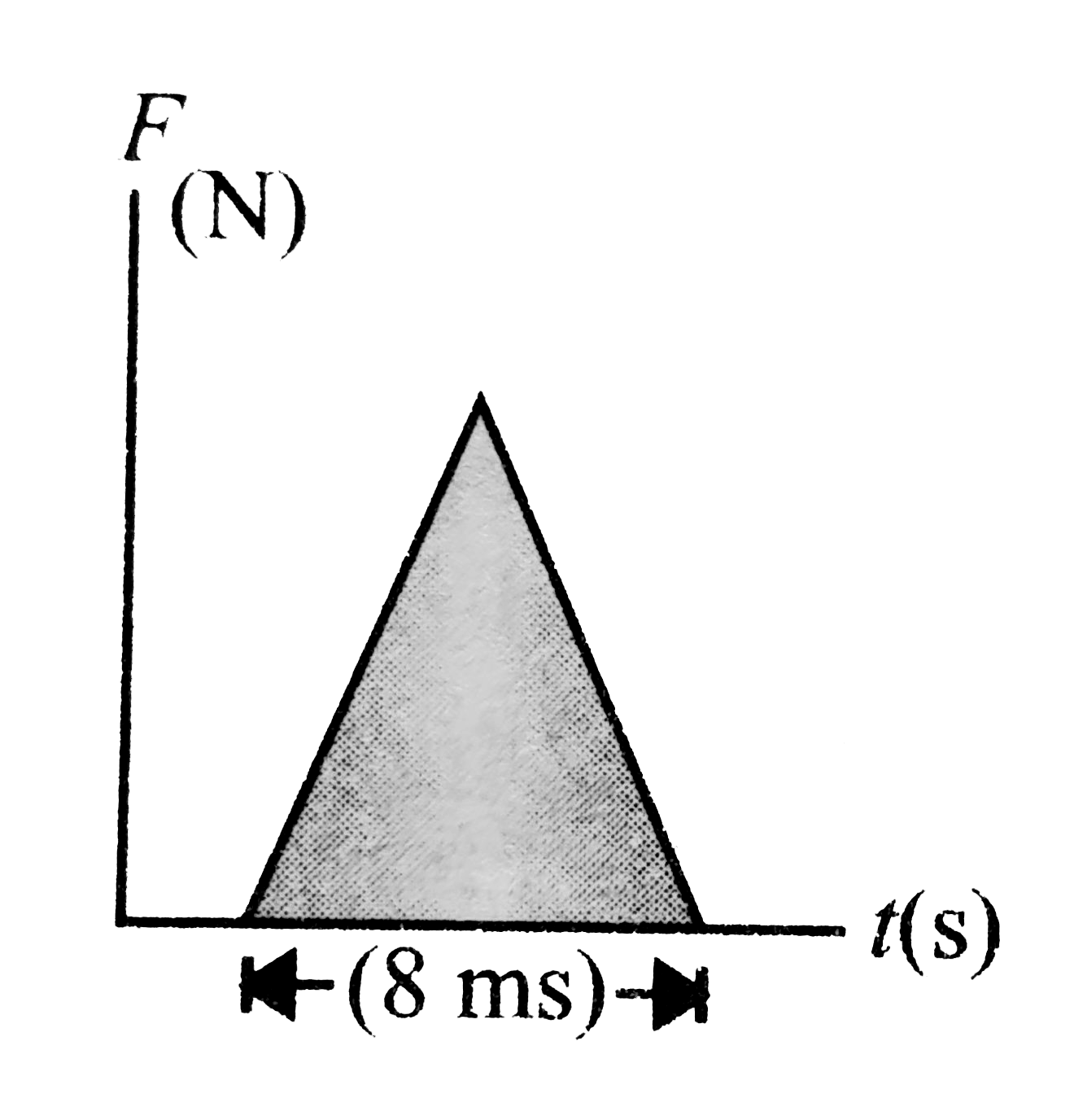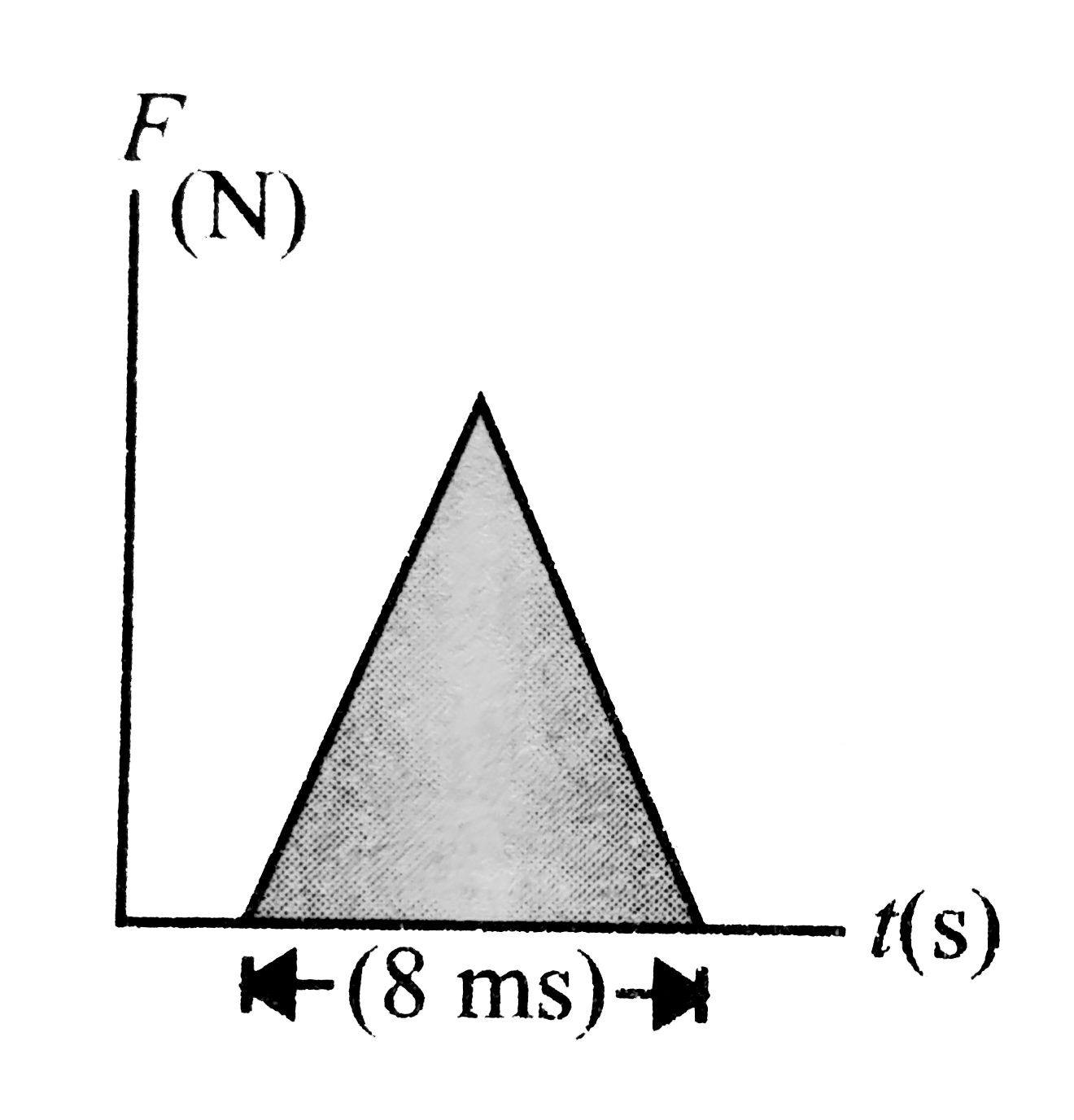The following problems illustrate the effect of a time-dependent force of a large average magnitude which acts on a moving object only for a short duration. Such forces are called 'impulsive' forces. According to the impulse-momentum theorem, impulse delivered to a body is equal to the change of linear momentum of the body.
A ball of mass 250g is thrown with a speed of 30m/s. The ball strikes a bat and it is hit straight back along the same line at a speed of 50m/s. Variation of the interaction force, as long as the ball remains in contact with the bat, is as shown in Fig.

Maximum force exerted by the bat on the ball is
A
2500N
B
5000N
C
7500N
D
1250N
Video Solution
Text Solution
The correct Answer is:B
Using area of △= change in momentum
12Fmax△t=250×10−3(80)
12Fmax(8×10−3)=250×10−3×80
Fmax=5000N
|
Topper's Solved these Questions
- CENTRE OF MASSBook:CENGAGE PHYSICSChapter:CENTRE OF MASSExercise:Integer
Explore 16 Videos
- CENTRE OF MASSBook:CENGAGE PHYSICSChapter:CENTRE OF MASSExercise:Fill In The Blanks
Explore 2 Videos
- CENTRE OF MASSBook:CENGAGE PHYSICSChapter:CENTRE OF MASSExercise:Assertion - Reasoning
Explore 2 Videos
- CALORIMETRYBook:CENGAGE PHYSICSChapter:CALORIMETRYExercise:Solved Example
Explore 13 Videos
- DIMENSIONS & MEASUREMENTBook:CENGAGE PHYSICSChapter:DIMENSIONS & MEASUREMENTExercise:Integer
Explore 2 Videos
Similar Questions
Knowledge Check
The following problems illustrate the effect of a time-dependent force of a large average magnitude which acts on a moving object only for a short duration. Such forces are called 'impulsive' forces. According to the impulse-momentum theorem, impulse delivered to a body is equal to the change of linear momentum of the body.
A ball of mass 250g is thrown with a speed of 30m/s. The ball strikes a bat and it is hit straight back along the same line at a speed of 50m/s. Variation of the interaction force, as long as the ball remains in contact with the bat, is as shown in Fig.

Average force exerted by the bat on the ball is
Let us consider another example. The given ball of mass 250g is dropped from a height 5m on a hard floor. Force exerted by the floor on the ball, as long as these are in contact, varies with time as shown in Fig.
 A5000NB1250NC2500ND7500N
A5000NB1250NC2500ND7500NThe following problems illustrate the effect of a time-dependent force of a large average magnitude which acts on a moving object only for a short duration. Such forces are called 'impulsive' forces. According to the impulse-momentum theorem, impulse delivered to a body is equal to the change of linear momentum of the body.
A ball of mass 250g is thrown with a speed of 30m/s. The ball strikes a bat and it is hit straight back along the same line at a speed of 50m/s. Variation of the interaction force, as long as the ball remains in contact with the bat, is as shown in Fig.

Linear momentum of the ball immediately after colliding with the floor will beA1.5kgm/sB2.5kgm/sC4kgm/sD0.5kgm/sThe following problems illustrate the effect of a time-dependent force of a large average magnitude which acts on a moving object only for a short duration. Such forces are called 'impulsive' forces. According to the impulse-momentum theorem, impulse delivered to a body is equal to the change of linear momentum of the body.
A ball of mass 250g is thrown with a speed of 30m/s. The ball strikes a bat and it is hit straight back along the same line at a speed of 50m/s. Variation of the interaction force, as long as the ball remains in contact with the bat, is as shown in Fig.
 After collision with the hard floor, the ball will bounce to a height A0.6mB2.4mC1.2mD1.8m
After collision with the hard floor, the ball will bounce to a height A0.6mB2.4mC1.2mD1.8m
A constant force of 12 N acts on a body for 4s. Find the change in the linear momentum of the body.
View SolutionAn impulsive force of 100 N acts on a body for 1 s What is the change in its linear momentum ?
View SolutionSome Special Problems on Impulse Momentum Theorem
View SolutionCalculate the force acting on a body which changes the momentum of the body at the rate of 1kg-m/s2.
View SolutionThe product of force and the time for which the force acts on a body is equal to the change in ______ of the body.
View Solution
